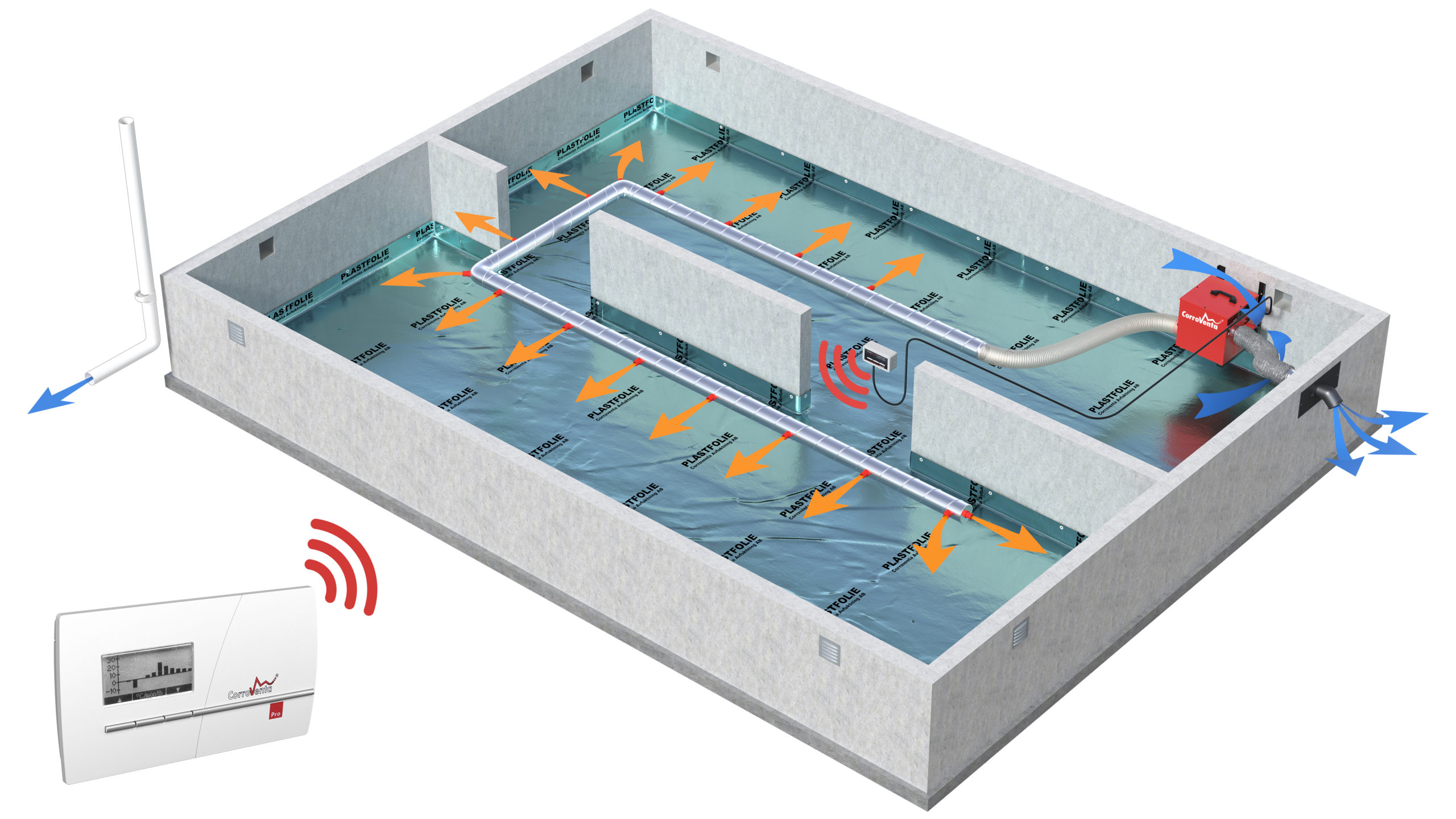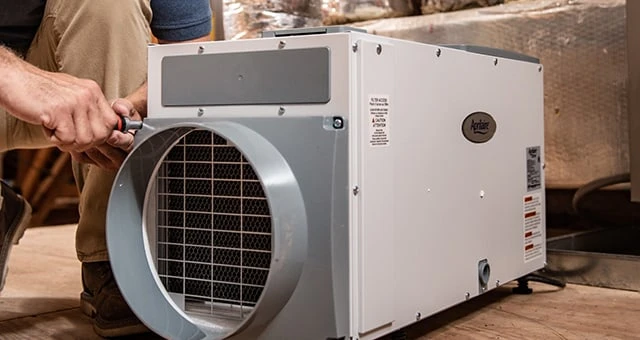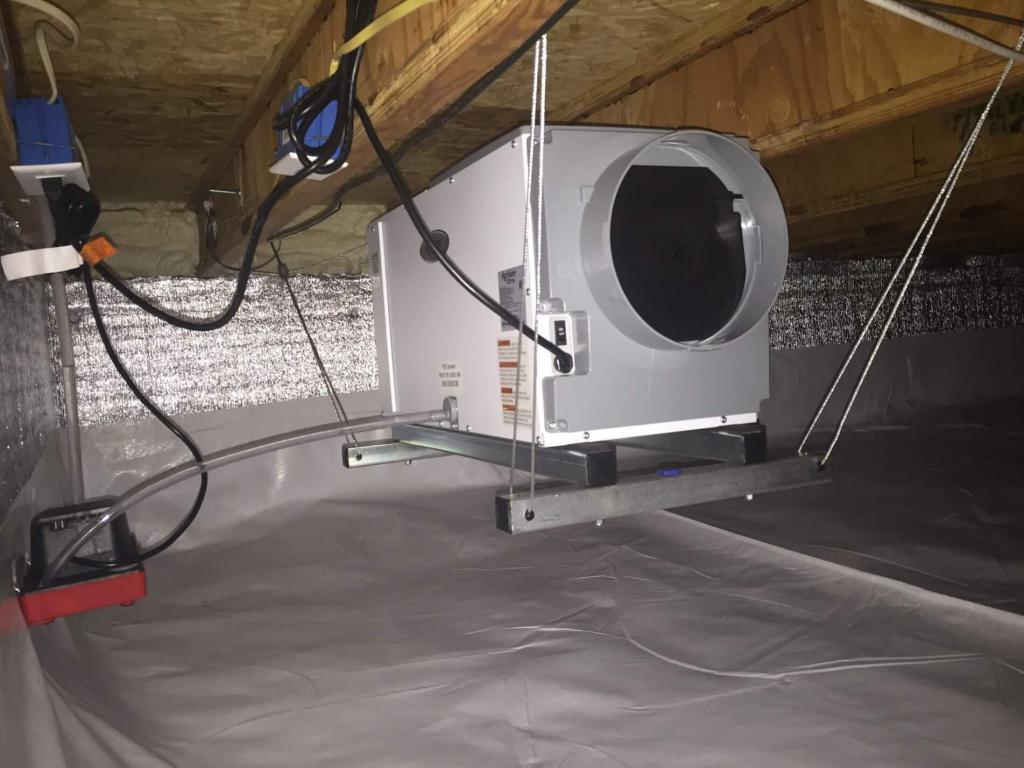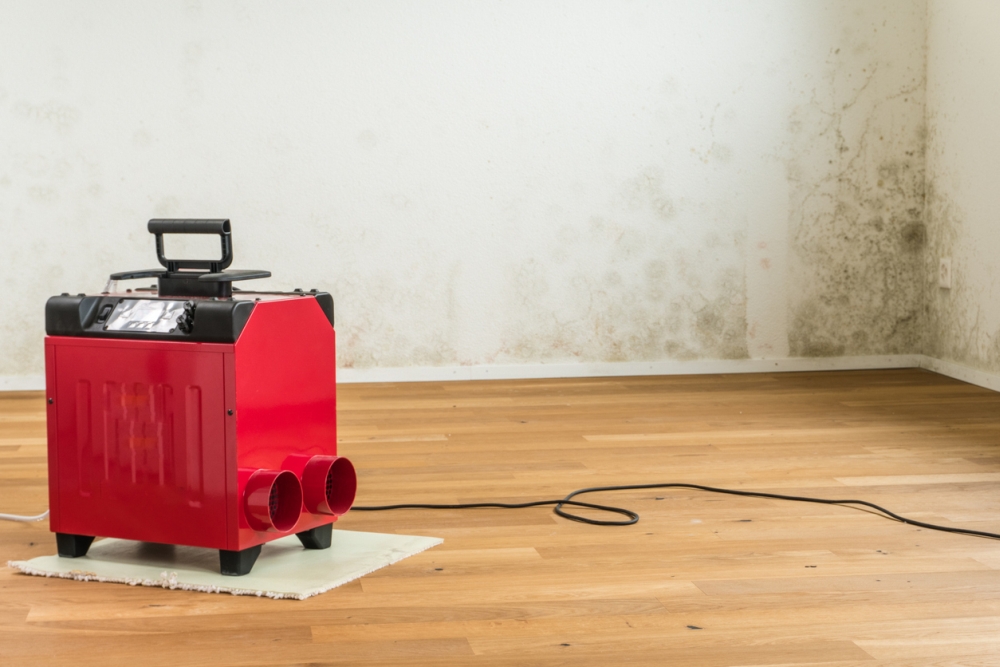Installing a dehumidifier is essential to maintain a healthy, dry crawl space environment and protect your home from mildew, mold, and rot caused by excess humidity. But how to select and properly install the dehumidifier? Do you need professional help?
This guide will provide you with a step-by-step walkthrough of how to install a crawl space dehumidifier yourself. From materials to electrical wiring, we’ve got you covered. Let’s get started.
Why Install Dehumidifiers In Crawl Spaces?
Several factors can cause the crawl space humidity levels to rise, including leaking pipes and condensation. High humidity will not only create a damp atmosphere ideal for mold formation, but it can also make your home uncomfortable and lead to health issues like allergies or asthma. Installing dehumidifiers in your crawl space can help you in numerous ways, including:
1. Home Protection
By controlling the humidity in your crawl space, dehumidifiers can prevent the growth of mold and mildew. This will help protect your home from water damage and air-borne allergens that can cause respiratory problems. Also, the structural integrity of your home will be maintained, as the dampness won’t weaken the foundation or other materials.
2. Enhanced Comfort
Dehumidifiers can help deal with poor indoor air quality throughout your home by reducing musty odors and excessive crawl space moisture that make a room stuffy and uncomfortable. This is especially beneficial during humid summer when crawl space air humidity levels can be difficult to control. Crawl space vents can also aid in dealing with mold growth.
3. Cost Savings
By controlling humid air and preventing excessive moisture damage, dehumidifiers can save you money on energy bills. The dehumidifier will help reduce the amount of work your air conditioner needs to do to keep your home cool and reduce the need for costly repairs that might be required due to water damage.
4. Improved Health
By reducing excess moisture and warm air in the home, dehumidifiers can help prevent the growth of mold spores and other allergens that can cause respiratory issues such as asthma or allergies. This makes it easier for family members to breathe more easily and stay healthier overall.

What Materials Will You Need?
Before starting your crawl space dehumidifier installation, gathering all the necessary tools and materials is important. You’ll need the following:
1. Crawl Space Dehumidifier
It’s important to ensure you have the right model and size for your particular space. You should also double-check that the unit is set to the proper settings for your area. Also, make sure you know the proper direction to point your unit. Do your research before purchasing and installing.
2. Condensate Pump
This will help collect the water from the dehumidifier and discharge it out of your crawl space. Make sure you know what size pump you need for the amount of water pumped out. Also, be sure to use a pump designed specifically for dehumidifiers.
3. Masonry Drill And Bits
This special drill will make a clean hole in any brick or block wall required for the PVC pipe installation. Be sure you have the right size drill bit for your particular wall material. Also, use a drill with a variable speed setting to avoid damaging your wall.
4. PVC Pipe And Cutters
This is necessary to create a dry conduit to transport the water out of your crawl space. You’ll need to measure the length of pipe you will need and choose the right size for your particular application. Also, get the proper cutters and glue for your PVC pipe.
5. Level
You’ll need a level or sloping tool to ensure multiple components are installed in the proper direction. This is important for ensuring your installation is done correctly and will last a long time. Also, ensure you use a level specifically designed for crawl space installations.
6. Hammer And Nails
These are necessary to hang the PVC pipe and build a platform for your dehumidifier. Use long nails to securely hold the components without worrying about them coming loose.
7. Strapping
This is also required to hang the PVC pipe and secure other components. Choose a strapping material designed specifically for crawl space installations, and ensure it is long enough for your particular application. Also, make sure it is durable and won’t rust or corrode.
8. Rubber Tubing
You’ll need this to discharge the water from the dehumidifier into the PVC pipe. Make sure you choose a specifically designed tubing for your particular application, and double-check that it will fit securely on the pipe connections.
9. Metal Clamps
These are important for securely fastening the rubber tubing to the special PVC connections. Be sure you choose clamps that won’t rust and corrode over time while still being able to hold the connection tightly in place. Also, ensure you have the right clamp size for your particular installation.
10. Screwdrivers
You’ll need these to tighten the clamps and other components securely. Make sure you choose screwdrivers designed for crawl space installations, as they will handle the environment better than regular tools. You should also ensure you have standard, Phillips, and flathead screwdrivers. Also, do have concrete blocks as well.
11. Drill And Screws
You’ll want to use a drill with the correct size screws for certain components to secure them. Make sure you have the right type of drill for your particular application and check that it is set to the proper speed for drilling through wood and other materials. Also, choose screws that won’t rust or corrode over time.
12. Water Shutoff Valve
This is important to help control the water discharged from the dehumidifier. Make sure you choose a shutoff valve that is specifically designed for your particular application, and double-check that it will fit securely on the pipe connections. Additionally, make sure you purchase one with manual or automatic operation settings.
Steps To Install Dehumidifier In Crawl Space
After gathering all the necessary tools, materials, and equipment for the installation process, you are ready to install the dehumidifier:
1. Location Of Dehumidifier
Locate an appropriate space in your crawl space that is large enough to accommodate the unit. Make sure it is easily accessible and clear of any obstructions or moisture sources that may cause damage. It should also be placed close to an electrical outlet. You may need to construct a platform for the dehumidifier if necessary.

2. Create A Level Foundation
Placing the dehumidifier on an even and level surface is crucial for its proper operation. Place the platform in the chosen area, ensuring its level before continuing with the installation. You can use concrete blocks, bricks, or even sandbags for this.
3. Install Ducting
After the platform is complete, it’s time to install the ducting for your dehumidifier. Connect one end of the ducting to the unit’s exhaust port and the other to a vent that leads outdoors. You may need to use insulation around this ducting to help regulate the temperature of the air being exhausted.

4. Connect Electrical
Once the ducting is in place, connect the electrical wiring according to the instructions provided with your unit. Ensure that you use an appropriate power source and that all wiring is properly grounded for safety. Also, ensure the power switch is in the “Off” position before connecting the electrical wiring.
5. Mount The Unit
Carefully mount the dehumidifier onto the platform, ensuring all components are firmly secured and connected. Ensure all lids, covers, and doors on the unit are properly sealed to prevent moisture from entering.
6. Set Up Controls
Set up the dehumidifier’s controls according to the manufacturer’s instructions. This will ensure that the unit runs efficiently and safely. Ensure that the humidity levels in your crawl space remain in a healthy range. Use wireless hygrometer systems if necessary.

7. Test And Check
Finally, turn on the dehumidifier and check to ensure everything is running properly. Listen for any abnormal noises, test all the controls, and monitor your crawl space’s humidity levels over a few days. If everything is working correctly, you can rest assured that your dehumidifier is correctly installed and ready to provide your crawl space with a healthy environment.
By following these steps, you can successfully install a dehumidifier in your crawl space and ensure that the humidity levels remain comfortable. With proper installation and maintenance, your unit should last for many years.
Do You Need Expert Help?
Following the installation guidelines above is a great way to install your crawl space dehumidifier. But if you run into any snags or are feeling overwhelmed, it’s best to reach out for help from an experienced professional. A professionally-installed crawl space dehumidifier will ensure you have the optimal humidity levels and air quality in your crawl space for a long time.
Look for local HVAC specialists or mold remediation companies with the expertise and know-how to help you. Plus, they will be able to provide advice on any other concerns that might be present in your crawl space.
How To Choose The Right Company
To find the best company for your crawl space dehumidifier installation, there are a few things you can do.
- First, investigate the companies you’re considering by looking for customer reviews online. This will help ensure that you hire a reputable company with a proven track record in the industry.
- You should also have detailed conversations with prospective companies to discuss the project’s specifics, such as product details, installation costs, and service warranties. This will help you make sure that you get the best possible results.
- Finally, compare prices between different companies to ensure you’re getting a fair deal. You should never have to sacrifice quality for affordability — there are plenty of reliable companies out there that offer both.
Follow all these steps when selecting a contractor to ensure you get the most out of your crawl space dehumidifier.
Conclusion
Installing a crawl space dehumidifier is an important step to protect your home from the negative effects of moisture. With proper installation, maintenance and monitoring, you can ensure that your crawl space stays dry and in optimal condition for many years. Keeping these steps in mind and following this guide closely will make installing a dehumidifier in your crawl space a breeze. By installing this device properly, you can protect your home and its inhabitants from moisture-related issues – now and in the future.


